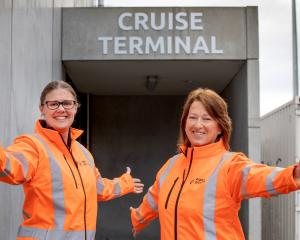The tourist boom of the past few years has helped underpin growth and prosperity in New Zealand.
While it has not been without its costs, international tourism has become a crucial earner of foreign exchange, a massive employer and a big contributor to tax revenue, notably through GST of well over $1billion.
Tourist numbers have spread beyond hot spots like Queenstown and Tekapo. Centres like Dunedin and Oamaru are now significant tourist magnets. Visitors have been central to the diversity and prosperity of their economies.
Many now believe tourist numbers are sufficient. Given the pressure on the likes of Queenstown, Wanaka, Milford and the West Coast, and issues over freedom camping and tourist driving, the arguments against further spectacular growth are strong.
However, a measure of wariness is in order because the growth could reverse. The boom is potentially fragile, and tourist numbers have gone through troughs before. While stable visitor numbers might be fine, a downward slide would cause severe problems.
Although numbers are dependent primarily on international prosperity, New Zealand's reputation and place in the international fashion sun could easily alter. For that reason, a warning from Tourism New Zealand's head Stephen England-Hall should be seriously noted.
While he says surveys showed growth in visitor satisfaction, costs were a threat. The perceived high cost of food, petrol and accommodation were not yet putting tourists off but they could well do so.
Visitors might be prepared to pay to visit world-class scenic attractions such as Milford Sound, but would, he says, resist the likes of the price of a one-bedroom, three-star, motel being hiked to $100 a night.
Anyone who has hosted overseas visitors will know they are surprised at just how expensive food and accommodation are, more so they say than in Europe and even Australia.
New Zealand lacks the economies of scale and the competition to drive down food prices. And visitors are also hampered by their lack of local knowledge - when and how to get the bargains, how to access loyalty discounts. They are also often visiting smaller centres, where grocery shops are more expensive.
A big part of the tourist market are those very same freedom campers who cause such consternation. They can stay for months and are willing to spend on attractions and experiences but will try to economise on accommodation. These are also often the young people who fill the hospitality jobs in tourist centres.
Higher wage costs, flowing from rising minimum wages, will affect tourism because many of its jobs are in the hospitality and service industries. The focus will have to be on efficiency to combat this.
New Zealand's scenic grandeur lures and wows visitors, as does the sense of space and clear air. While these are going nowhere, at least the landscape wonder, there is competition from other nations, many closer to where most potential tourists live, giving an inherent airfare cost advantage to the likes of Switzerland or even Argentina.
Tourism has been propelled by extra flights, particularly from China but also by fresh links to the United States. But New Zealand's distance from everywhere means hefty costs before touring even begins.
International visitor spending last year reached $10.6billion, with Australia, $2.6billion, China, $1.5billion and the United States, $1.4billion the biggest contributors. The widening range of visitors is encouraging and should help restrict volatility.
The top-end sector will not be particularly sensitive to prices, and New Zealand does not want to sell itself too cheaply. Nevertheless, as shoppers for any product or service know, there comes a point where resistance sets in.
Momentum can go in both directions.




